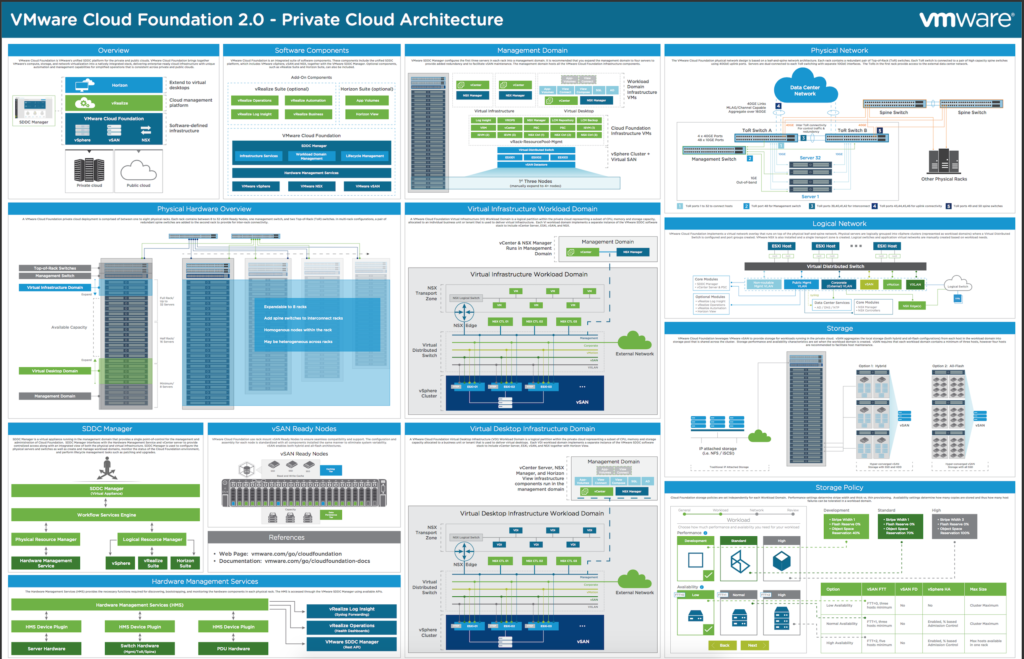The VMware Cloud Foundation (VCF) platform automates the deployment and lifecycle management of the SDDC. The deployment will help an organization go from installation of the physical rack to a ready-for-deployment vSphere environment in a matter of hours. The VCF platform includes the following VMware products:
- VMware vSphere Hypervisor
- VMware vCenter Server
- VMware NSX-v
- VMware vRealize Operations
- VMware vRealize Log Insight
As the previous post mentioned, there are several management components VCF relies upon for its automation and workflow framework. After the initial deployment is complete, a vSphere Administrator will still need to perform several tasks to fully configure the environment and make it ready for a production workload. Some of those steps include:
- Configuring LDAP or Active Directory authentication sources.
- Creating local accounts.
- Configuring the network uplinks on the physical network equipment.
- Configuring NSX and/or the Virtual Distributed Switch for upstream network connectivity.
- Configuring a jump host for accessing the OOB network where the iDRAC interfaces exists.
- Multiple jump hosts will be required, one for each physical rack since the OOB network is duplicated within each rack.
- NIOC will need to be configured.
- Proper configuration of the Resource Pools VCF creates will need to be completed — no reservations or shares exist after initial deployment.
- Log Insight management packs, where necessary, will need to be configured.
- vRealize Operations will need to be configured.
- DNS integration.
- Adjust the Virtual SAN storage policies per your environments requirements.
A few key points to remember,
- Do not modify the cluster structure outside the VRM workflows — which means no creating new clusters or splitting existing clusters up.
- Do not modify the names of any of the management virtual machines.
- Do not modify the name of the Virtual Distributed Switches.
- Do not modify the pre-configured portgroup names.
- All expansion of hosts/capacity needs to be initiated from the VRM interface.
- The management cluster will only deploy initially with 3 nodes — barely enough for any true fault tolerance for Virtual SAN. I highly encourage you to expand it to the recommended VMware Best Practice of a 4 hosts.
- Upgrades always occur in the management cluster first, then the workload domains — which I personally believe to be a bit backwards.
The VCF product is a great first step along the path of fully automated deployments and lifecycle management. The biggest challenge to adopting it will be balancing the line between what VCF manages and what a typical vSphere Administrator is going to be used to doing. Operationally it will take some adjustment, especially when using the lifecycle management workflows for the first time.
Happy Thanksgiving!








